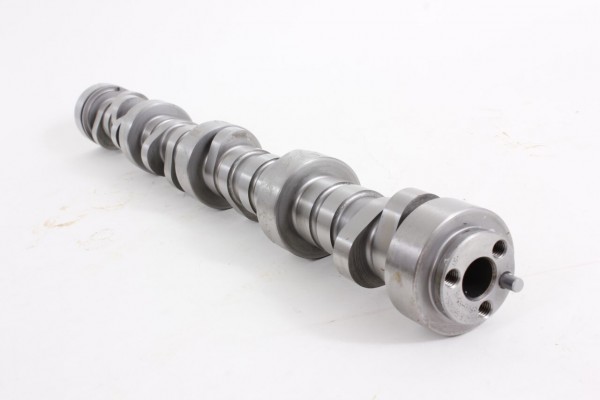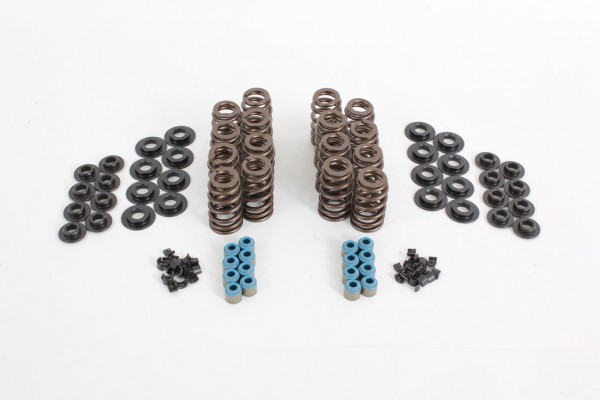When Chevrolet announced they were bringing the Camaro back and that it was going to be a retro design, many Camaro enthusiasts probably thought:
“I really hope they don’t screw it up!”
Let’s face it, with a car as iconic as any of the first-Gen Camaros, it had to be true to the original in order for Chevy to pull it off. And to say Chevy nailed it would be a gross understatement!
Keith Kanyuh of Plant City, FL is an avid fifth-Gen Camaro enthusiast. Keith’s 2010 Camaro is heavily modified and truly embodies the culture and history of the Camaro nameplate. The majority of the aftermarket parts on Keith’s Camaro, however, were aesthetic or suspension based. That being said, Keith wanted the aggressive sound you can only get from an aftermarket camshaft.
Keith had all the looks, he just needed the rumble!
“With just bolt-ons, the car’s performance was ‘sufficiently boring’ for a daily driven street car,” Keith said. “Compared to most, the car would probably outperform a majority of the other daily drivers on the road. I should have been happy with that, but of course, I wasn’t. The exhaust gave the car a nice deep tone, but not the rumble I was after.”
To remedy the situation, he reached out to Summit Racing who set him up with a slew of parts from Crane Cams. After some back and forth on the combo, wants and needs, etc., he decided to go with a custom grind camshaft to get the perfect blend of performance, sound, and drivability. Along with the camshaft, Keith also ordered valve springs, retainers, locks, valve guide seals, and a trunion upgrade for the rocker arms. Crane also sent one of its double roller timing chains for the LS3.
Throughout the planning process, one of Keith’s requirements was the car needed to retain as much drivability as possible. This made the cam profile very important. Crane came back with specs that weren’t overly big, but would make significant gains while adding impressive sound. Lift numbers checked in at .590/.590-inch, while duration was 218/236 degrees @ 0.050.
Aside from cam selection, tuning was an extremely large part of the success or failure of this endeavor. For that, Keith brought in Phil Aprea of Tampa Tuning. Keith’s Camaro was brought to 360 Customs in Brandon, FL where it was strapped to the company’s Dynojet chassis dyno. Initially, the car laid down 406 horsepower to the rear wheels with 410 ft.-lbs. of torque (these numbers were recorded at a different dyno session).
With all the new parts installed, Keith’s Camaro spun the rollers to 456 rear-wheel horsepower and 423 ft.-lbs. of torque, for a peak gain of 50 rear-wheel horsepower and 13 ft.-lbs. of torque. The camshaft and valvetrain upgrades combined with the extensive tuning left Keith with great power and even better drivability. Aprea went into detail on some of the changes made to Keith’s Camaro.
“The Camaro had two nice areas of gain,” Aprea said. “At 3,700 rpm, the Camaro had gains of 18 rear-wheel horsepower, and at 6,100 rpm it had a gain of 57 rear-wheel horsepower. At 3,400 rpm, the Camaro had gains of 25 ft.-lbs. of torque, and at 5,800 rpm it had a gain of 44 ft.-lbs. of torque. The temperature was a little hotter than I’d like in the shop, but we live in Florida and we have to calibrate for it. Intake air temperatures were 93-97 degrees on most of the runs. On a cooler day we could have made 460 rear-wheel horsepower.”
Aprea made other changes to the tune that contributed to the power gains and drivability.
“Idle was raised 200 rpm, bringing it to 750 rpm,” he said. “One to 5 grams of air was added to maintain idle and prevent the Camaro from stalling with the A/C on. I calibrated the Camaro with the A/C on because that’s the environment we live in. We targeted 12.60 air/fuel ratio at wide open throttle, which the Camaro maintained after calibrating the MAF and reaching .91 Grams cylinder air.
“We dialed in the Camaro’s low end three times to make sure it had quality drivability. That’s the most important strategy to apply on these cars and the hardest to obtain. But we drive the cars more at cruising and part throttle in traffic than we do at wide open throttle. Wide open throttle was easy to accomplish and was calibrated to maintain an AFR of 12.60. Some shops lean the cars out for better dyno numbers, but I’d rather have it slightly richer for a safer car.”
“After the cam upgrade, the car feels and drives like a completely different animal,” Keith said. “The idle is superbly low and choppy but easily manageable and still very drivable, even in rush hour stop-and-go traffic, which I am forced to endure on a daily basis. I can feel a distinct difference in the torque curve, and third gear, where the pull is strongest, is now my favorite! I have no regrets at all concerning the cam upgrade or the custom tuning performed by Phil at Tampa Tuning. I seem to get compliments from complete strangers on a daily basis, who all say the car sounds fantastic!”
When all was said and done, Keith left 360 Customs with a car that sounded amazing, had near stock drivability, and most importantly, made 50 more horsepower than it did when it got there. This project is the perfect example of knowing what you want, doing the right research, and picking the right parts.
























Love it. Great write up Pete, Im happy to help with a build
[…] on a Tampa Tuning client's Camaro with a mild cam set up and a Tampa Tuning calibration. Phil Rumble On! Adding 50 Horsepower to 2010 Camaro with a Crane Cams Camshaft and Valvetrain Upgrade – O… __________________ Check out your car on our facebook page. […]